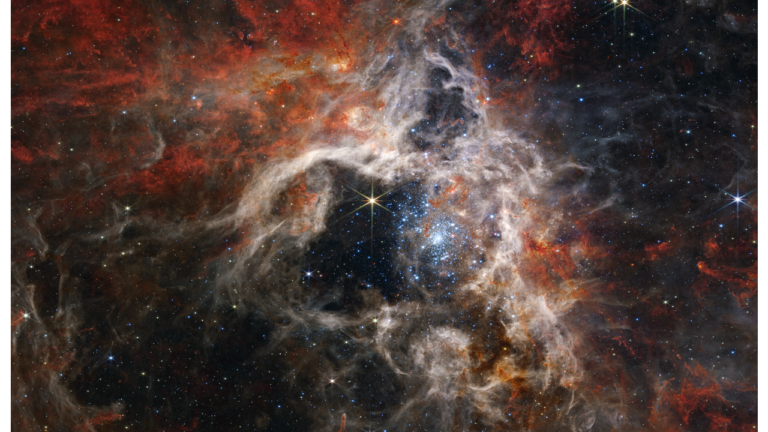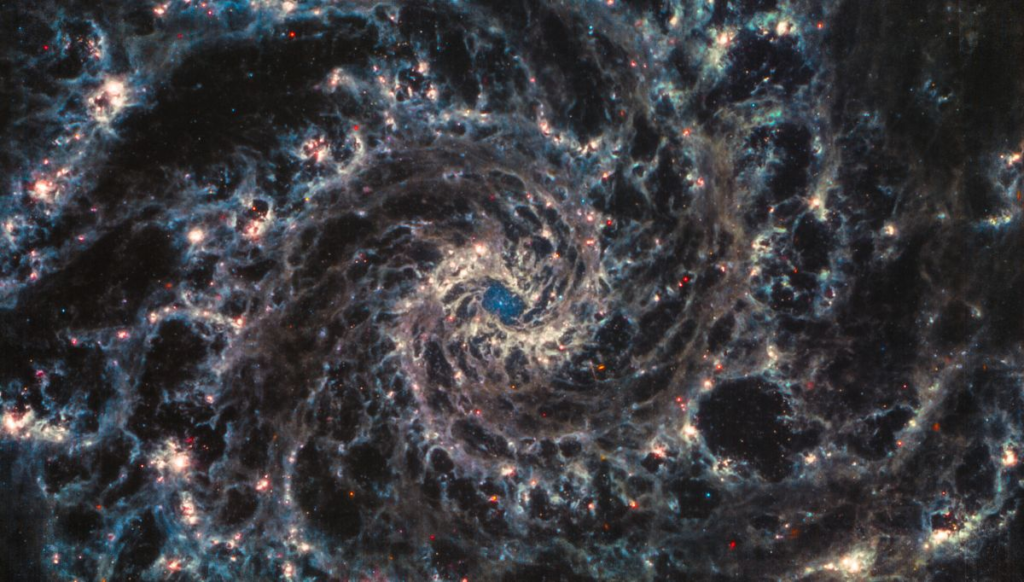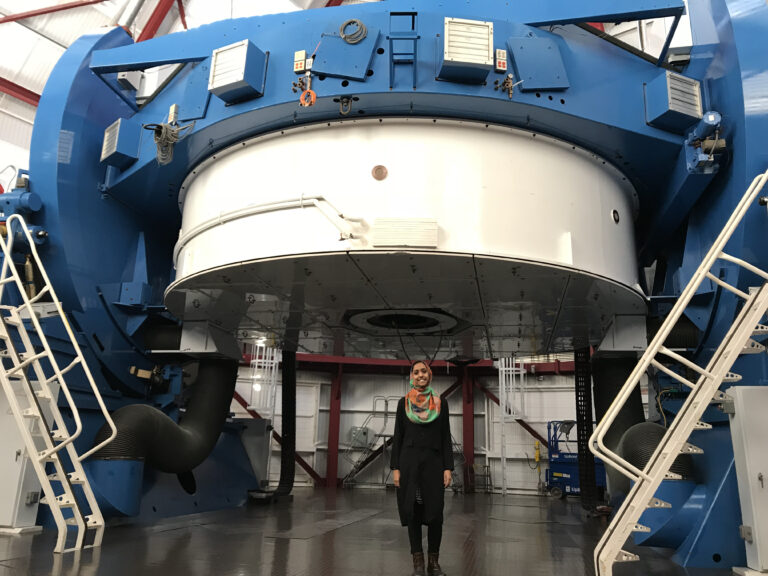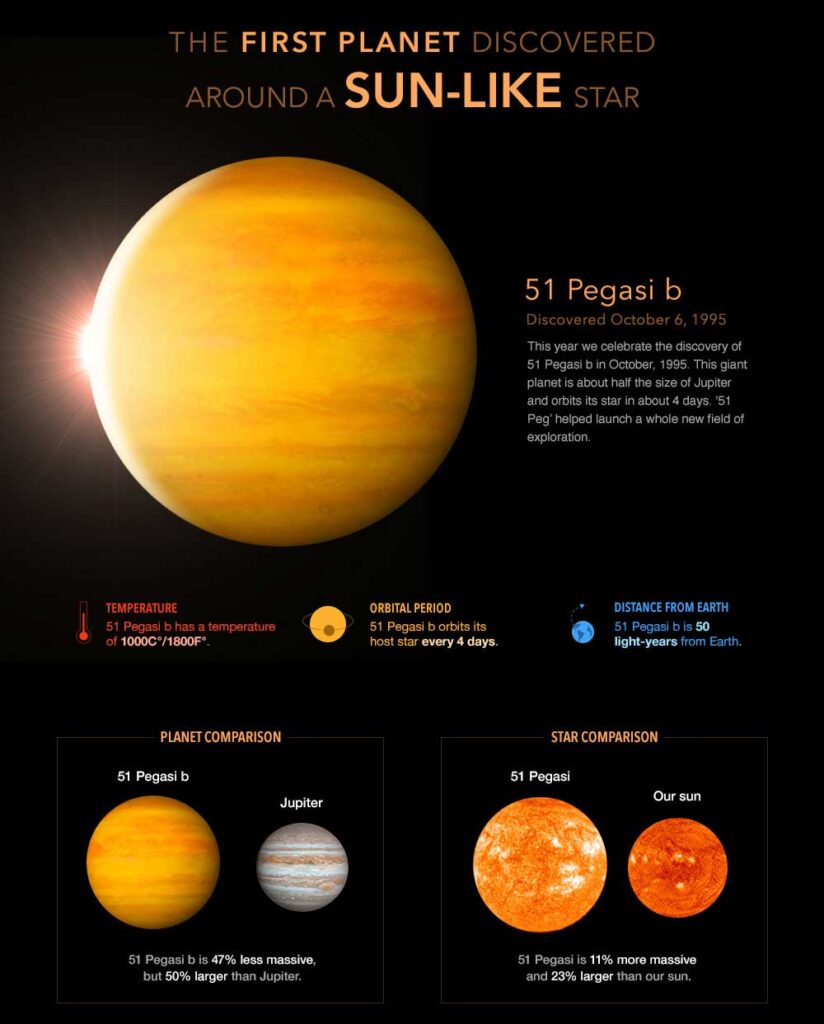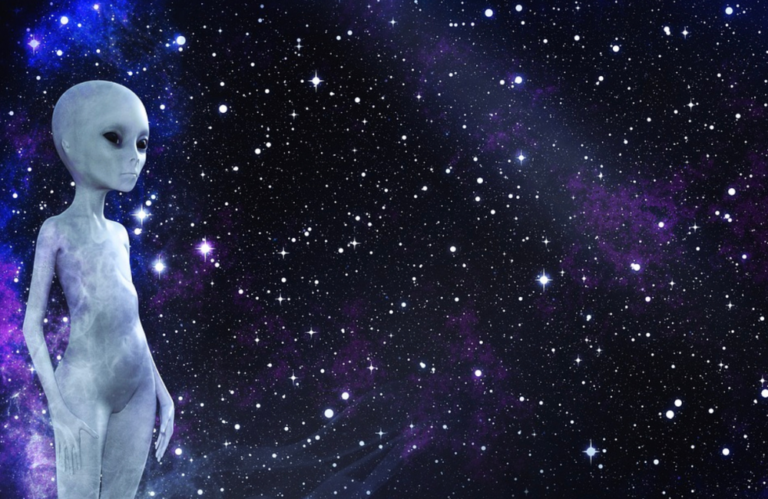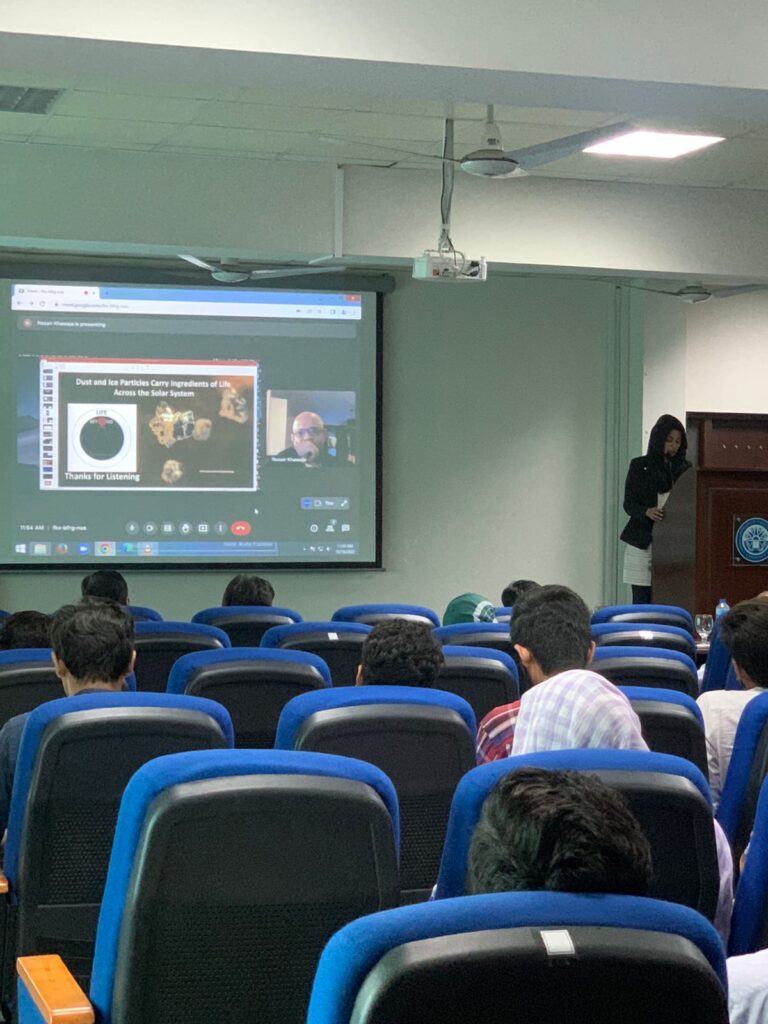The cosmos is divided into two scales: The very large (Classical) and the very small (Quantum). Attempts to describe these two worlds have been made relentlessly over the last few centuries. Astronomers and physicists alike have presented their understanding of the universe. Newton explained the laws of motion and gravity, and the laws of Thermodynamics explained the energy and heat transfer in a system.
Einstein’s theories of Special and General relativity explained space-time and gravity; Quantum mechanics and the Standard Model of physics explained the fundamental particles and forces of nature; string theory attempted to present a unified theory, and many more.
In a world where time warps and particles dance to the tune of probability lies the intersection of two of the greatest theories in physics: The Theory of Relativity and Quantum Mechanics. Relativity explains the behavior of objects at a classical level, covering gargantuan objects like Quasars to everyday objects like a car, the motion of the planets, the collision of galaxies, and the workings of the ever-expanding Universe.
Quantum mechanics explains the workings of the Quantum world, from the entanglement of two quantum objects to the fundamental forces of nature and fundamental particles. Without these two theories, our understanding of the Universe would be little to none. Even almost a century later, experiments still prove many different aspects of these two fundamental theories.
As ground-breaking as these theories might be, physicists have found them to be incompatible with each other. And this conflict has been brewing for almost over a century.
Many physicists aspire to merge quantum mechanics and general relativity to comprehend the laws of quantum gravity. Solving the paradox would significantly deepen our understanding of the natural world. From the symphony of galaxies to the mechanics of fundamental particles, unifying these two theories will answer all the questions and solve the mysteries of the Universe.
Everything should be made as simple as possible, but not simpler. ~Albert Einstein
Relativity (Theory of the Big stuff)
Our story began in 1905 when a patent clerk presented a radical view of the Universe.
The special theory of relativity
The Special theory of relativity attempts to explain how speed affects space, time, and mass. It also says that mass is interchangeable with energy as defined by the infamous equation
𝐸 =𝑚𝑐2.
According to this equation, as an object approaches light speed, its mass becomes infinite, and the energy needed to move it increases, making it impossible for matter to exceed light speed.
An important aspect of Special relativity is Time Dilation. It can describe as “When an object is moving very fast, time slows down than when it is at rest.” The effect is not as apparent when the speeds are not extremely large. However, for a traveler moving at the speed of light, time should stop according to relativity.
Due to limitations, humans can’t travel near the speed of light, so this phenomenon is yet to be tested. However, this was experienced at a much smaller level when astronaut Scott Kelly spent nearly a year on the International Space Station while his twin brother, Mark Kelly, was on Earth. Mark was said to have aged a little faster than his brother due to time dilation; however, the difference was negligible.
The general theory of relativity
In 1915, Einstein gave his General Theory of Relativity, expanding on topics like gravity and space-time. Einstein proposed that the Universe is made up of 4 dimensions and space and time are interwoven to form a space-time fabric continuum. According to him, time is relative. A person experiencing the same phenomenon from the North Pole will experience it at a different time than someone experiencing it around the Equator.
Previously, gravity was thought to be a force (due to Newton’s theory), but Einstein proposed that gravity is, in fact, the curvature of the space-time fabric. Let’s take this example: Imagine a trampoline with a taut fabric. When you place a heavy object on it, there is a depression created in the fabric. If you place a ball on this trampoline, the ball will automatically roll toward the depression.
Now let’s apply this example to a much larger scale. Planets have a mass, which creates a bump in the fabric of space-time, and so does the moon. As the moon revolves around the Earth, it gravitates towards the depression created by Earth in the fabric of space-time. This attraction is gravity. According to Einstein, gravity is not a force. Any object with mass will disturb the space-time field, causing other objects to gravitate toward it.
Another important aspect is Gravitational lensing. According to it, light bends around heavy objects. Astronomers observe this phenomenon as light bends around galaxies, black holes, and other heavy objects.
Einstein’s theories became one of the most successful theories of all time. The General Theory of Relativity is renowned as one of the greatest scientific achievements of the 20th century. Its ingenuity, depth, and accuracy in predictions surpass all others. Einstein replaced Newton’s law of gravity, which stated gravity as “action-at-a-distance,” with a new idea of gravity as a bend in space-time. This laid the basis for contemporary understandings of the universe, including black holes and the Big Bang theory of the universe’s development.
Quantum Mechanics (Theory of the Small stuff)
Subsequently, in the 20th century, physicists like Planck, Bohr, and Einstein laid the groundwork for Quantum mechanics. It attempts to explain the nature and workings of the quantum world. The quantum theory’s biggest achievement is the Standard model.
The Standard Model gives us an understanding of the building blocks of nature. The particles are broken down into two: Fermions and Bosons. Fermions are matter particles and encompass all the matter present in this Universe. Fermions are broken down into Quarks and Leptons. Whereas the Bosons are the force carrier particles. They are responsible for the four fundamental forces: Strong force, Weak force, Electromagnetic force, and Gravitational force.
The theory also provides a mathematical framework to predict the probabilities of various outcomes in quantum systems, such as particles’ position, momentum, and energy. The theory is known for its counterintuitive predictions, such as the superposition of states and entanglement. It is essential for understanding many phenomena in physics, chemistry, and technology.
The theory of quantum mechanics is a defining achievement in modern science and has proven to be one of the most successful theories in history. All experiments have agreed with its predictions, and despite numerous attempts, its validity has never been challenged.
The current theory of quantum mechanics, known as the Standard Model of particle physics, has successfully explained the universe through four fundamental forces and demonstrated that three of these forces are different expressions of the same force. It has accurately predicted the existence of 17 particles, which were later discovered through particle accelerators.
Despite its triumphs, quantum mechanics also presents physicists with several counterintuitive truths, such as “spooky action at a distance.” This occurs when two particles become so interconnected that a measurement of one particle instantly affects the other particle’s state, regardless of their distance.
Clash of Titans
The Theory of Relativity deals with the laws of gravity and large-scale structures of the universe. At the same time, Quantum Mechanics explains the behavior of matter and energy at the atomic and subatomic levels. However, they are incompatible with each other in their predictions for the behavior of particles at these very small scales.
Nature
Relativity considers objects as indivisible masses in space-time, while Quantum Mechanics views matter as probability waves rather than localized particles. Relativity predicts definite outcomes, but Quantum Mechanics provides only probabilities. When applying Relativity to the scale described by Quantum Mechanics, the results are not meaningful.
Space time continuum
General Relativity describes space as continuous, while Quantum Mechanics views it as quantized or granular. Einstein’s 1915 theory of General Relativity explains gravity as a continuous force that shapes the geometry of spacetime. In contrast, quantum mechanics regards forces as discontinuous and made up of ‘quanta’. As a result, there is no equivalent concept of a gravitational field in conventional quantum mechanics, unlike the other three fundamental forces.
The division between General Relativity and Quantum Mechanics can be considered “smooth” versus “chunky”. General Relativity is continuous and deterministic, meaning every cause has a specific local effect. On the other hand, quantum mechanics involves probabilistic, discontinuous events that occur in “quantum leaps” through the interaction of subatomic particles. Quantum mechanics permits connections not allowed by classical physics.
The black hole information paradox
General Relativity and Quantum Mechanics have conflicting views on black holes. General Relativity says that objects entering a black hole will be destroyed, erasing all information except spin, charge, and mass. On the other hand, Quantum Mechanics states that information cannot be destroyed. This creates the black hole information paradox. According to Hawking, the information about objects entering a black hole is lost.
It cannot be predicted through Hawking radiation because the interior of the black hole is cut off from the external universe by the event horizon. The loss of information violates energy conservation and quantum mechanics, which requires micro-reversibility. The violation of micro-reversibility also destroys energy conservation. Thus, if the information is lost, quantum mechanics needs to be modified, and if it’s not, general relativity must be adjusted to allow the escape of information through Hawking radiation.
Solution
The Theory of Relativity and Quantum Mechanics are two pillars of modern physics, but they clash in their description of reality at the smallest scales. This is why physicists have been trying to develop a unified theory that can reconcile these two theories, known as quantum gravity, for many years.
Quantum Gravity is a theoretical framework that aims to reconcile the principles of quantum mechanics and general relativity to create a comprehensive description of the behavior of matter, energy, and gravity at all scales, from the smallest subatomic particles to the largest structures in the universe.
It is considered one of the most challenging problems in theoretical physics because the principles of general relativity and quantum mechanics are so fundamentally different. Attempts to merge these two theories have been ongoing for many years, and various theories have been proposed, including string theory, loop quantum gravity, and non-commutative geometry. However, a complete and universally accepted theory of quantum gravity has yet to be established.
The development of a successful theory of quantum gravity has necessary implications for our understanding of the universe. It could answer questions such as what happened during the Big Bang, what happened in the first few moments of the universe, what happens inside black holes, and whether the universe has a quantum origin.
In the 20th century, several key discoveries about the universe were made, including Stephen Hawking’s work on black hole decay through radiation and Cosmic Microwave Background radiation. These findings showed that matter exhibits quantum behavior but moves following classical spacetime, leading to the development of semi-classical gravity, a bridge between quantum mechanics and general relativity.
Black holes located in the universe’s outer reaches could hold the key to unifying these theories, a belief held by Hawking himself in his “theory of everything.” The intense gravitational pull of black holes, which can even trap light, could reveal how macroscopic and nanoscopic particles interact.
Hawking’s work on string theory and Hawking radiation, a type of radiation emitted by black holes, brought him close to bridging the gap between quantum mechanics and general relativity. Despite being too small to observe, Hawking radiation provides insight into what a unified theory may look like.
Potential solutions to quantum gravity and various mathematical dualities have been debated for years. It remains uncertain if our fundamental understanding of physics needs to be revised. A unified theory of quantum astronomy could revolutionize our understanding of the universe and lead to a new era of theoretical physics and cosmology.
Key Takeaway
The quest for uncovering the mysteries of the universe is a journey that may take science many more years to complete. Despite numerous attempts, the intersection between relativity and quantum mechanics remains a mystery. Nevertheless, the journey toward uncovering the truth has begun.
Science isn’t just about finding answers but also about raising new questions. The most compelling theories are the ones that inspire further inquiry, leading to a never-ending cycle of discovery and exploration, much like the infinite nature of space-time.
References:
- Einstein’s theory of general relativity | Space
- The universe at odds: Quantum mechanics versus general relativity – The McGill Tribune
- Relativity versus quantum mechanics: the battle for the universe | Physics | The Guardian
- Gravity Probe B – Special & General Relativity Questions and Answers (stanford.edu)
Also, Read: https://scientiamag.org/problems-involving-interstellar-communication/







